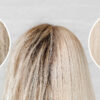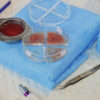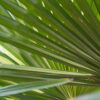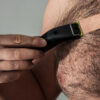Frequency of hair washing is a topic that is often discussed by stylists, hairdressers and trichologists. The key is to match it to the needs of your hair and scalp, while not falling into the traps of washing too often or the popular “greasy” hair that has no effect. Find out how often to wash your hair.
How often do you wash your hair?
Hair should be washed as often as it needs it. Therefore, it is impossible to establish a rigid time frame when you need to wash your hair – for one person it will be necessary to wash daily, while for another it will be appropriate to cleanse every 2-3 days. However, one should not exaggerate in either direction.
If your hair is practically not getting oily and you would be comfortable not washing it even for a week, it would be best to wash it every few days at most. Just because they don’t look dirty doesn’t mean that external dirt or dead skin doesn’t settle on them. If, on the other hand, your hair clearly doesn’t need washing, but you wash it because it’s choppy after a night out, it’s best:
- choose a very gentle shampoo for this purpose, or even wash your hair with conditioner, and use shampoo every other day,
- Consider styling your hair with a brush to improve your hairstyle,
- Tie them in such a way that the hair still looks favorable when undone – for example, in a snaffle chignon or French braids, which will give a beautiful crimping effect in the morning.
Does frequent washing damage the hair?
In discussions about the frequency of hair washing, you may notice that some people accuse this procedure of damaging the hair or causing it to become too oily. Hair is not damaged by washing itself, but by how we do it, what cosmetics we use for it and how we dry it.
The same is true for oily scalp. If we use aggressive cleansers on a daily basis, we may end up damaging the hydrolipid layer. Then, in simple terms – the sebaceous glands receive a signal that the skin is dry and should be lubricated. How to solve this problem? Use gentle cleansers or seek advice from a trichologist. The specialist, after analyzing the condition and type of scalp, will choose the best cosmetics for washing and care without any difficulty.
What does the frequency of hair washing depend on?
How often you wash your hair is largely dependent on how you spend your free time and the type of work you do. If you’re in a dusty environment where it’s not difficult for floating dirt to settle in your hair, it may be necessary to wash your hair every day, even if your skin doesn’t require it – such problems are faced by people working in the construction and gardening sectors, and as beauticians, podiatrists or dentists. Frequent exposure to the gym, daily running or cycling can also force an increase in the frequency of washing. Also, wearing hats in winter affects the frequency of hair washing.
The way we eat is of great importance – it is not known for a long time that the products we eat have a big impact on how our skin behaves, including the scalp. Hence the popularity of diets designed to eliminate the troublesome symptoms of many diseases such as. Hashimoto’s or atopic dermatitis. Improperly selected cosmetics and the method of washing often also has an impact on how often we have to do it. It’s easy to see that after using certain cosmetics, the skin needs refreshing much faster.
A factor that significantly affects the frequency of washing is the amount of sebum secreted by the skin, which is sometimes determined by the levels of certain hormones. Therefore, the problem of excessive scalp oiliness often affects adolescents growing up, pregnant women or women in menopause. If your hair is getting oily at a rapid pace, consider going for a checkup to determine thyroid hormone levels. However, it so happens that the rate of oily scalp is associated with certain diseases, for example. Seborrheic dermatitis, in which case the skin is covered with yellow scales, from which sometimes oozes a secretion. Excessive oiliness can also be genetic.
Hair washing tips
Brush your hair before washing as you always do. This will prevent them from tangling. After washing, if combing wet, use combs with widely spaced teeth. Use lukewarm water – water that is too hot can lead to faster greasiness, as well as over-expand hair scales, which will be more susceptible to damage. It is best to wash the scalp with a small amount of shampoo, and only drag the foam created during a gentle massage through the hair.
Wash your hair twice and then rinse thoroughly – leaving leftover cleansing products on your hair or skin is a straight path to future problems. Excess water after washing is wiped off in a towel. You can also wrap your hair in a loose turban for a few minutes – then the strands will pre-dry themselves. Avoid rubbing or wrapping the hair too tightly. These are particularly susceptible to damage especially when wet.
Also, never sleep with wet hair – although it may seem like a good thing in summer, strands are much more easily damaged, and the scalp is more likely to develop fungus or develop dandruff. This is not very hygienic also as the pillow becomes damp and becomes a habitat for microorganisms.
How to choose the right shampoo for washing hair?
Most people choose their shampoo according to what kind of hair they have. However, the cleansing product is best selected according to the problems and the type of scalp – after all, it is the scalp that the shampoo rubs into. Among the most common types of scalp are those sensitive, oily, dry or with dandruff. A much smaller number of people declare that they have a normal scalp, i.e. one that maintains adequate moisture levels on its own.
For daily washing, it is best to choose a gentle shampoo whose composition is based on mild cleansing agents. Once a week you can use a product that contains slightly more aggressive surfactants such as SLS or SLES in its formulation. However, it is worth knowing that although strong cleansers are currently quite demonized, there are a huge number of people who wash their hair with them every day and forever. If you are one such person, everything is fine with your scalp and your hair is in good condition, there is no need to suddenly change your habits.
Hair washing methods
Among the most popular methods of washing hair, we can mention:
- standard – that is, a simple shampoo wash. To do this, apply the cosmetic to the palm of the hand, and then directly to the scalp and massage. Some liquid formulations are worth diluting with water on the hand beforehand and only applying. Drag the foam formed at the skin only along the length of the hair, then rinse thoroughly.
- cup – dedicated to hair and scalp that are delicate and dry. It involves pouring a small amount of shampoo into a pre-prepared container and diluting it with water. For one pump of the cosmetic there is usually about 150 ml of water. Then mix until a light foam is formed and only in this form apply to the hair, then massage. Special cups for washing hair with this method are available on the market. It works well with both liquid and bar shampoos.
- OMO – designed for owners of damaged and dry hair, but not too fine, as these could be overstressed. OMO involves washing with a conditioner-shampoo-conditioner scheme. The first cosmetic applied is to protect the strands from damage during washing, the second to cleanse, and the third to regenerate and protect. It is a good idea to leave the conditioner applied as a second application on the hair a little longer. It may contain silicones or oils in the formulation. The first, on the other hand, should be light.
Some also practice OM (conditioner and then wash) and MO (the other way around) methods. You can also meet people who, instead of shampoo, use a properly selected conditioner to wash their hair. However, if this is the case, be sure to include mild detergents such as Behentrimonium Chloride or Cetrimonium Chloride. This is a method that works well for very dry, sensitized, bleached and colored hair. The scalp must not then become oily or show any particular problems, as the conditioner will prove insufficient.
What besides washing?
Scalp peeling is recommended for everyone, but especially for people who have problems with seborrhea or dandruff. How can it help us? First of all, it exfoliates and removes dead skin. In addition, it thoroughly cleanses the scalp and allows active substances from later applied preparations to penetrate the deeper layers of the skin. It also helps remove the residue of heavy cosmetics from the hair, such as protective serums, dry shampoos and hair powders, or styling products with hard-to-wash silicones. Professional peeling can be performed by a trichologist, who will simultaneously select the best product for the needs of the specific skin.
Professional scalp treatments
We can go to a professional trichologist for professional treatments at virtually any time, with any problem, or preventively, to prevent it in the future. If a specialist notices something of concern, he will certainly bring it to your attention. Among the most popular trichology treatments for the scalp are needle mesotherapy, botox for hair, peptide therapies and deep cleansing.
If you notice symptoms such as itching and burning of the scalp, redness, dandruff, eczema, excessive shedding, seborrhea or baldness, it is best not to wait and go to a specialist for help. In some cases, symptoms can be easily curbed, even before they develop in earnest. Certainly, however, the problem of baldness will not be solved by hair loss shampoo.





